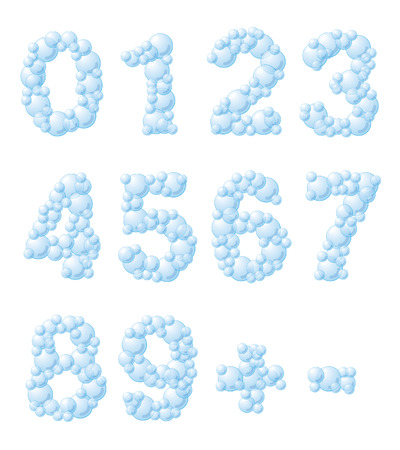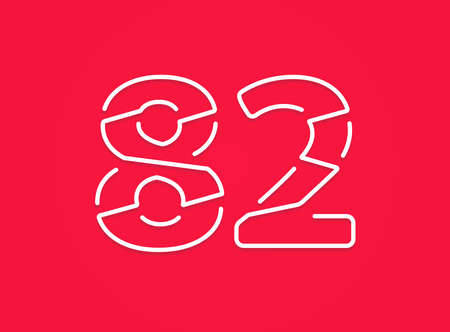1. Introduction: The Cultural Context of Palmistry in America
Palmistry, also known as palm reading, has a long and fascinating history that stretches across continents and centuries. While its roots can be traced back to ancient India, China, and Greece, the practice has evolved significantly since arriving in the United States. Today, palmistry holds a unique spot in American society—balancing somewhere between mystical tradition and mainstream entertainment.
The Journey of Palmistry to America
Palm reading first gained popularity in America during the late 19th and early 20th centuries, when interest in spiritualism and the occult was booming. Traveling carnivals and vaudeville shows often featured palm readers, who attracted curious crowds eager for a glimpse into their futures. Over time, American culture began to reshape palmistry, blending it with local beliefs and trends.
Palmistry’s Evolution in U.S. Popular Culture
As decades passed, palm reading shifted from being an exclusively mystical or secretive art to becoming part of pop culture. Hollywood movies and television regularly feature scenes where characters have their palms read for fun or guidance. Magazines run celebrity palm readings, and some American celebrities themselves have spoken about their experiences with palmists.
Palmistrys Place in Modern American Society
Today, palmistry exists in multiple spaces: at county fairs, on social media, within self-help circles, and even at upscale parties. Its presence is both serious—used by those seeking insight—and playful—enjoyed by people looking for lighthearted entertainment. Americans often view palm reading with a mix of skepticism, curiosity, and open-mindedness.
| Era | Palmistry’s Role | American Perception |
|---|---|---|
| Late 1800s–Early 1900s | Carnival attraction; linked to spiritualism | Mystical curiosity |
| Mid-1900s | Seen in movies/TV; party entertainment | Light-hearted fun; some skepticism |
| 21st Century | Social media trend; celebrity readings; wellness events | Blend of entertainment & self-exploration |
The story of palmistry in America is one of adaptation and reinvention. In this series, we’ll delve deeper into how Americans interpret hand shapes—especially through the lens of famous personalities—to reveal what our fascination with palm reading says about our culture today.
2. American Hand Shapes: What Do They Reveal?
When it comes to palmistry, the shape of your hand can say a lot about who you are. In the United States, certain hand shapes are more common due to the country’s diverse cultural background and values. Let’s take a closer look at what these hand shapes might reveal about personality traits and the broader American culture.
Main Types of American Hand Shapes
| Hand Shape | Description | Possible Personality Traits |
|---|---|---|
| Square Palm, Short Fingers (Earth Hand) | Palm is as long as it is wide, fingers are shorter than the palm. | Practical, reliable, down-to-earth, values tradition. |
| Long Palm, Short Fingers (Fire Hand) | Palm is longer than it is wide, fingers are short. | Energetic, ambitious, loves challenges, confident. |
| Square Palm, Long Fingers (Air Hand) | Palm is square-shaped with long fingers. | Intellectual, communicative, adaptable, values logic. |
| Long Palm, Long Fingers (Water Hand) | Palm and fingers are both long and slender. | Creative, sensitive, empathetic, intuitive. |
Cultural Insights from Celebrity Palm Readings
Many American celebrities display hand shapes that reflect widely admired qualities in U.S. culture. For example:
- Dwayne “The Rock” Johnson: His broad palms and sturdy fingers suggest earth qualities—practicality and reliability—which align with his hardworking public image.
- Taylor Swift: Her long fingers and elegant hands point to air or water elements—creativity and communication—matching her songwriting talents and expressive performances.
- Ellen DeGeneres: With a balanced palm and strong yet flexible fingers, Ellen’s hands reflect adaptability and open-mindedness, traits valued in American entertainment.
What These Traits Say About American Values
The most common hand shapes among Americans often reveal key cultural values such as independence (fire hands), practicality (earth hands), creativity (water hands), and adaptability (air hands). These traits echo the “American Dream” mindset: being self-reliant, resourceful, open to new ideas, and valuing both tradition and innovation. Whether in Hollywood or everyday life, these hand characteristics offer a fascinating peek into what makes American personalities unique.

3. Celebrity Palmistry: Notable Cases in the Spotlight
Exploring Famous American Hands
Ever wondered what your favorite celebrities hands might reveal about their personalities? In this section, we take a closer look at some well-known American stars and analyze their hand shapes and palm lines. By examining these features, we can uncover interesting clues about their leadership, creativity, and ambition—traits often celebrated in American culture.
Celebrity Hand Analysis Table
| Celebrity | Hand Shape | Palm Line Highlights | Personality Insights |
|---|---|---|---|
| Dwayne “The Rock” Johnson | Square (Earth) | Strong Head Line, Deep Life Line | Natural leader, grounded, high energy, resilience |
| Taylor Swift | Long (Air) | Curved Heart Line, Clear Fate Line | Creative, expressive, visionary, driven by passion |
| Oprah Winfrey | Spatulate (Fire) | Bold Heart Line, Prominent Sun Line | Innovative thinker, charismatic, inspirational leader |
| Elon Musk | Conical (Water) | Intersecting Fate and Head Lines | Inventive mind, adaptable, ambitious risk-taker |
| Beyoncé Knowles-Carter | Square with Tapered Fingers (Mixed) | Straight Head Line, Strong Mount of Venus | Balanced approach, creative power, determined ambition |
What These Hands Tell Us About American Values
The hand shapes and palm lines of these celebrities reflect qualities that resonate with the American spirit. Square or earth-shaped hands often indicate stability and practical leadership—traits seen in business icons and athletes. Long or air-shaped hands are associated with communication and creativity, a hallmark of successful artists and performers. The boldness of fire-type hands is linked to innovation and fearless ambition, while water-type hands show adaptability and emotional intelligence.
The Role of Palm Lines in Shaping Destiny
Palm lines like the head line (representing intellect), heart line (emotions), fate line (career path), and sun line (creativity) add layers to each celebritys profile. For example:
| Palm Line Feature | Cultural Meaning in America |
|---|---|
| Deep Life Line | Symbolizes vitality and perseverance—essential for achieving the “American Dream” |
| Curved Heart Line | Reflects emotional openness and strong relationships—key to public connection and influence |
| Prominent Sun Line | Tied to fame and artistic success—mirroring Americas love for stardom and entertainment |
| Straight Head Line | Signifies logical thinking and focus—important in leadership roles across industries |
Cultural Takeaway: Hands as a Mirror of Ambition and Creativity
The study of celebrity hand shapes offers a unique lens into how personal attributes align with broader cultural values. Whether its the resilience found in athletes or the inventiveness of entrepreneurs, the lines on their palms often mirror the ambitions that have shaped their public personas—and continue to inspire millions across America.
4. Cultural Significance: Hand Gestures, Communication, and Identity
In American culture, hand gestures play a huge role in how people communicate and express themselves. Whether it’s a friendly wave, a firm handshake, or the classic thumbs-up, these small movements often carry big meanings. For many Americans, using hands while talking is natural—helping to add emotion, emphasize points, or show agreement.
Understanding Hand Gestures in American Life
Hand gestures are everywhere in daily American interactions. Some are universal, while others have special meanings only Americans might understand. Here’s a quick look at some common hand gestures and what they mean in the U.S.:
| Gesture | Meaning in the U.S. | Common Use |
|---|---|---|
| Handshake | Greeting, respect, agreement | Introductions, business meetings |
| Thumbs-up | Approval, agreement | Praise, encouragement |
| Peace sign (V) | Peace, victory, friendliness | Casual photos, greetings |
| High five | Celebration, congratulations | Sports events, achievements |
| Waving | Hello or goodbye | Greetings from afar, departures |
The Cultural Layer of Hand Shapes in Palm Readings
Palm reading isn’t just about the lines on your hand—it also considers the shape and movement of your hands. In America, popular culture often links certain hand shapes with personality traits. For example, celebrities with long fingers may be described as creative or artistic during interviews or TV shows about palmistry. Square palms might be associated with practicality and leadership—qualities admired in American society.
Cultural Attitudes Shape Interpretation
The way Americans interpret hand shapes often reflects their values. Open hands might signal honesty and friendliness—a trait many Americans appreciate in public figures. Meanwhile, a strong grip or firm handshake is seen as a sign of confidence and trustworthiness.
Identity and Self-Expression Through Hands
Your hands can say a lot about who you are before you even speak. Many Americans use rings, tattoos, nail art, or unique gestures to express their identity and stand out. Celebrities often set trends by showing off their hands in music videos or red-carpet events. In palm readings featured in magazines or online videos, the analysis of these hand shapes connects directly to how fans see their favorite stars’ personalities.
5. Modern Palm Reading: Trends and Ethical Considerations
Palmistry in Todays American Culture
Modern palm reading has come a long way from its mystical origins. In the United States, palmistry is now often seen as both a fun social activity and a tool for self-reflection. While some still approach it with deep spiritual meaning, many Americans enjoy palm readings at parties, pop-up events, or even online just for entertainment.
Trends Shaping Palm Reading Today
Social media has played a big role in bringing palmistry to new audiences. Platforms like TikTok and Instagram are filled with quick palm reading tutorials, celebrity hand analyses, and interactive live sessions. People can share photos of their hands and get instant feedback from readers or fellow users. Here’s a look at some popular trends:
| Trend | Description | Example |
|---|---|---|
| Celebrity Hand Analysis | Breaking down famous hands for personality clues and cultural insights. | Analyzing Taylor Swift’s “creative” hand shapes on Instagram Live. |
| Quick Tutorials | Short videos explaining basic lines and meanings. | TikTok clips showing how to spot the “Heart Line.” |
| Virtual Readings | Online sessions via Zoom or DM. | Scheduling a digital palm reading party with friends. |
| User Participation | People post their own hand photos for crowd-sourced interpretations. | #PalmReadingChallenge on Twitter or Reddit threads. |
Best Practices for Respectful and Ethical Palm Reading
With its rise in popularity, it’s important to keep palmistry thoughtful and respectful. Here are some key guidelines:
- Consent First: Always ask before reading someone’s palm, whether in person or online.
- Avoid Predicting Health or Death: Steer clear of sensitive topics that could cause worry or harm.
- No Stereotyping: Don’t make assumptions based on gender, race, or background—focus on individual traits instead.
- Respect Privacy: Never share someone’s hand photo or reading without permission.
- Transparency: Be upfront about your experience level; if you’re not a professional, let others know this is for fun or learning.
- Cultural Sensitivity: Recognize that palmistry draws from many traditions—be mindful and avoid cultural appropriation by giving credit where it’s due.
- Create a Supportive Space: Keep readings positive and encouraging; focus on strengths rather than weaknesses.
Palm Reading Dos and Donts Table
| Dos | Donts |
|---|---|
| Ask permission first | Read hands without consent |
| Stay positive and supportive | Makes scary predictions |
| Acknowledge different cultures | Stereotype based on appearance |
| Encourage self-reflection | Dwell on negatives or insecurities |
| Share only with permission | Post hand photos without asking |
The modern American approach to palmistry balances curiosity with respect. Whether you’re analyzing celebrity palms or sharing tips online, keeping things ethical ensures everyone enjoys the experience together.


